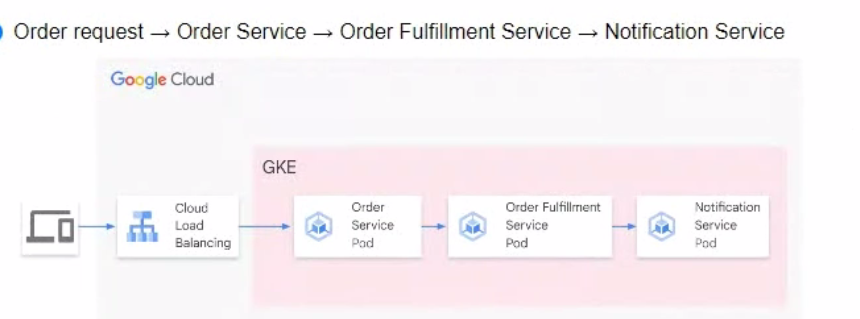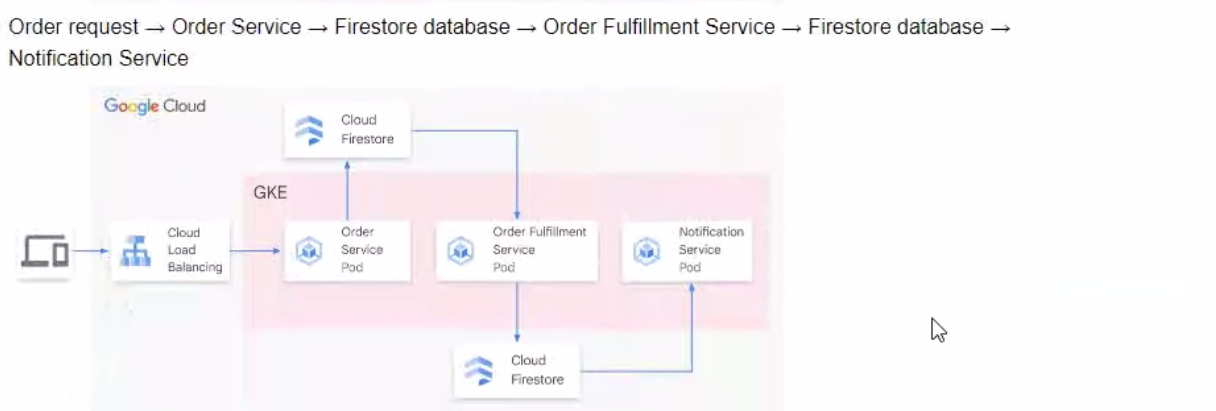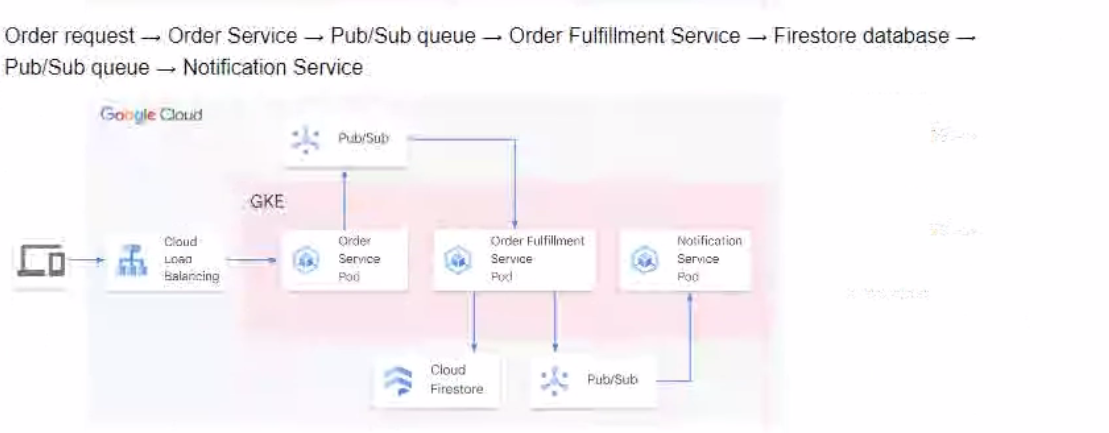Google Professional-Cloud-Developer - Google Certified Professional - Cloud Developer
Total 265 questions
You are developing a flower ordering application Currently you have three microservices.
• Order Service (receives the orders).
• Order Fulfillment Service (processes the orders).
• Notification Service (notifies the customer when the order is filled).
You need to determine how the services will communicate with each other. You want incoming orders to be processed quickly and you need to collect order information for fulfillment. You also want to make sure orders are not lost between your services and are able to communicate asynchronously. How should the requests be processed?
You are developing an application that consists of several microservices running in a Google Kubernetes Engine cluster. One microservice needs to connect to a third-party database running on-premises. You need to store credentials to the database and ensure that these credentials can be rotated while following security best practices. What should you do?
You are designing an application that consists of several microservices. Each microservice has its own RESTful API and will be deployed as a separate Kubernetes Service. You want to ensure that the consumers of these APIs aren't impacted when there is a change to your API, and also ensure that third-party systems aren't interrupted when new versions of the API are released. How should you configure the connection to the application following Google-recommended best practices?
You are writing a single-page web application with a user-interface that communicates with a third-party API
for content using XMLHttpRequest. The data displayed on the UI by the API results is less critical than other
data displayed on the same web page, so it is acceptable for some requests to not have the API data
displayed in the UI. However, calls made to the API should not delay rendering of other parts of the user
interface. You want your application to perform well when the API response is an error or a timeout.
What should you do?
You have an application in production. It is deployed on Compute Engine virtual machine instances controlled
by a managed instance group. Traffic is routed to the instances via a HTTP(s) load balancer. Your users are
unable to access your application. You want to implement a monitoring technique to alert you when the
application is unavailable.
Which technique should you choose?
You are in the final stage of migrating an on-premises data center to Google Cloud. You are quickly approaching your deadline, and discover that a web API is running on a server slated for decommissioning. You need to recommend a solution to modernize this API while migrating to Google Cloud. The modernized web API must meet the following requirements:
• Autoscales during high traffic periods at the end of each month
• Written in Python 3.x
• Developers must be able to rapidly deploy new versions in response to frequent code changes
You want to minimize cost, effort, and operational overhead of this migration. What should you do?
The development teams in your company want to manage resources from their local environments. You have been asked to enable developer access to each team’s Google Cloud projects. You want to maximize efficiency while following Google-recommended best practices. What should you do?
You are developing an online gaming platform as a microservices application on Google Kubernetes Engine (GKE). Users on social media are complaining about long loading times for certain URL requests to the application. You need to investigate performance bottlenecks in the application and identify which HTTP requests have a significantly high latency span in user requests. What should you do9
Your development team has been asked to refactor an existing monolithic application into a set of composable microservices. Which design aspects should you implement for the new application? (Choose two.)
You have an application deployed in production. When a new version is deployed, you want to ensure that all production traffic is routed to the new version of your application. You also want to keep the previous version deployed so that you can revert to it if there is an issue with the new version.
Which deployment strategy should you use?







